Input interpretation

picric acid
Chemical names and formulas

formula | (O_2N)_3C_6H_2OH Hill formula | C_6H_3N_3O_7 name | picric acid IUPAC name | 2, 4, 6-trinitrophenol alternate names | 2, 4, 6-trinitrophenol | melinite | picronitric acid | trinitrophenol mass fractions | C (carbon) 31.5% | H (hydrogen) 1.32% | N (nitrogen) 18.3% | O (oxygen) 48.9%
Lewis structure
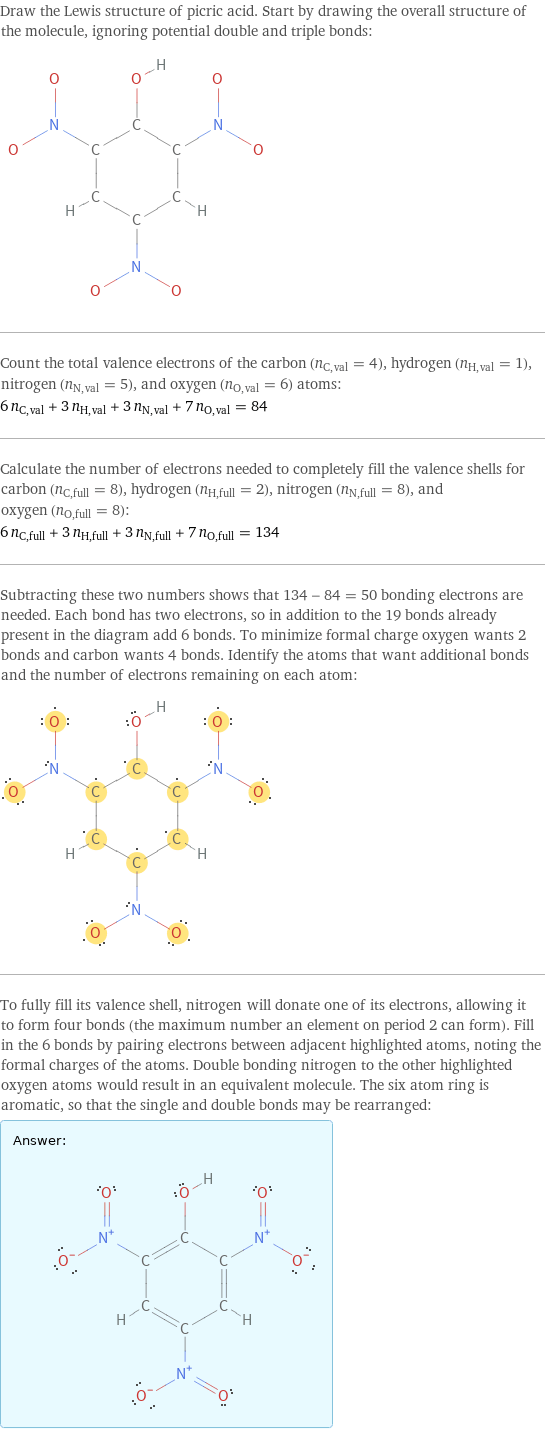
Draw the Lewis structure of picric acid. Start by drawing the overall structure of the molecule, ignoring potential double and triple bonds: Count the total valence electrons of the carbon (n_C, val = 4), hydrogen (n_H, val = 1), nitrogen (n_N, val = 5), and oxygen (n_O, val = 6) atoms: 6 n_C, val + 3 n_H, val + 3 n_N, val + 7 n_O, val = 84 Calculate the number of electrons needed to completely fill the valence shells for carbon (n_C, full = 8), hydrogen (n_H, full = 2), nitrogen (n_N, full = 8), and oxygen (n_O, full = 8): 6 n_C, full + 3 n_H, full + 3 n_N, full + 7 n_O, full = 134 Subtracting these two numbers shows that 134 - 84 = 50 bonding electrons are needed. Each bond has two electrons, so in addition to the 19 bonds already present in the diagram add 6 bonds. To minimize formal charge oxygen wants 2 bonds and carbon wants 4 bonds. Identify the atoms that want additional bonds and the number of electrons remaining on each atom: To fully fill its valence shell, nitrogen will donate one of its electrons, allowing it to form four bonds (the maximum number an element on period 2 can form). Fill in the 6 bonds by pairing electrons between adjacent highlighted atoms, noting the formal charges of the atoms. Double bonding nitrogen to the other highlighted oxygen atoms would result in an equivalent molecule. The six atom ring is aromatic, so that the single and double bonds may be rearranged: Answer: | |
3D structure
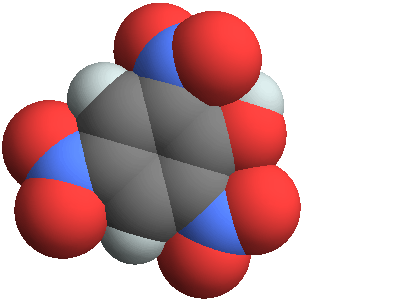
3D structure
Basic properties
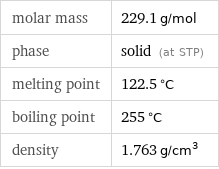
molar mass | 229.1 g/mol phase | solid (at STP) melting point | 122.5 °C boiling point | 255 °C density | 1.763 g/cm^3
Units

Hydrophobicity and permeability properties

predicted LogP hydrophobicity | 1.83 predicted LogS | -3.07
Basic drug properties

approval status | experimental | small molecule drug categories | indicators and reagent | uncoupling agent
Solid properties (at STP)
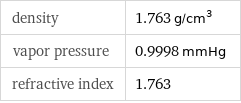
density | 1.763 g/cm^3 vapor pressure | 0.9998 mmHg refractive index | 1.763
Units

Thermodynamic properties
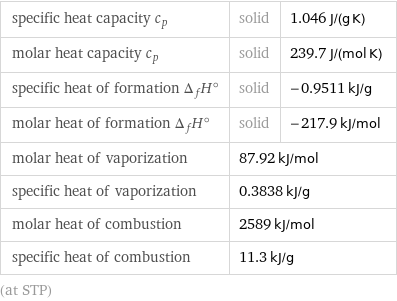
specific heat capacity c_p | solid | 1.046 J/(g K) molar heat capacity c_p | solid | 239.7 J/(mol K) specific heat of formation Δ_fH° | solid | -0.9511 kJ/g molar heat of formation Δ_fH° | solid | -217.9 kJ/mol molar heat of vaporization | 87.92 kJ/mol | specific heat of vaporization | 0.3838 kJ/g | molar heat of combustion | 2589 kJ/mol | specific heat of combustion | 11.3 kJ/g | (at STP)
Chemical identifiers
[O-])O)[N+](=O)[O-])[N+](=O)[O-] InChI identifier | InChI=1/C6H3N3O7/c10-6-4(8(13)14)1-3(7(11)12)2-5(6)9(15)16/h1-2, 10H InChI key | OXNIZHLAWKMVMX-UHFFFAOYAM RTECS number | TJ7875000 MDL number | MFCD00007102](../image_source/ef1a26329956c35eb530be3d8582712a.png)
CAS number | 88-89-1 Beilstein number | 423400 PubChem CID number | 6954 PubChem SID number | 24854392 SMILES identifier | C1=C(C=C(C(=C1[N+](=O)[O-])O)[N+](=O)[O-])[N+](=O)[O-] InChI identifier | InChI=1/C6H3N3O7/c10-6-4(8(13)14)1-3(7(11)12)2-5(6)9(15)16/h1-2, 10H InChI key | OXNIZHLAWKMVMX-UHFFFAOYAM RTECS number | TJ7875000 MDL number | MFCD00007102
NFPA label

NFPA label

NFPA health rating | 3 NFPA fire rating | 4 NFPA reactivity rating | 4
Safety properties

flash point | 150 °C autoignition point | 300 °C

DOT hazard class | 4.1 DOT numbers | 1344
Toxicity properties

short-term exposure limit | 0.3 mg/m^3

long-term exposure limit | 0.1 mg/m^3 (over 8 hours) RTECS classes | mutagen